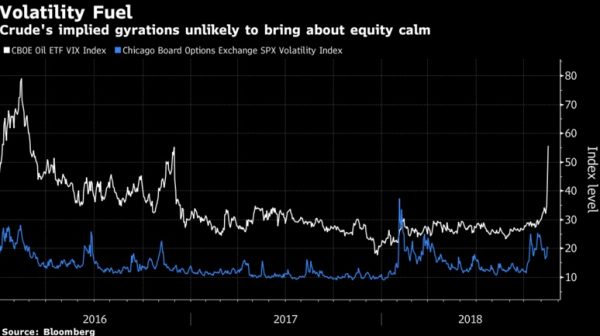Investors have gone from contemplating the prospect of oil at $100 to sub-$50 in less than two months. No wonder global markets are playing catch-up. From stocks and bonds to currencies, assets worldwide are gripped by a crude awakening. Monday saw oil’s largest one-day drop in three years, securing its longest losing streak on record.
Early trading jitters on Wednesday suggested the sell-off may not be over, though West Texas Intermediate later climbed after OPEC President Suhail Al Mazrouei said the group and its allies would do what is needed to balance the market. The Stoxx Europe 600 Index dropped on Wednesday, with oil and gas companies among the big losers. There could be more pain in store. The performance of energy shares relative to the broader index has yet to hit year-to-date lows despite elevated price swings in the oil-market complex.
In the U.S., energy stocks were the biggest drag on the S&P 500 Index on Tuesday as the benchmark gauge reversed a gain of more than 1 percent to finish in the red. The jump in volatility of the oil price will feed into already bruised U.S. stocks, according to Macro Risk Advisors. About $80 million flowed out of the SPDR S&P Oil and Gas Exploration and Production exchange-traded fund, ticker XOP, on Tuesday. That was the third day of withdrawals and the largest in more than two weeks. The corporate bond market had taken the slide in crude on the chin but Tuesday’s rout may force investors to pay closer attention. U.S. investment-grade debt was already facing the worst year since 2008, and energy securities make up some 15 percent of the BBB rated universe.
Declining oil is a two-sided coin for the collection of assets and economies classed as emerging markets. Many of the countries, such as Gulf nations like Saudi Arabia, are energy exporters that suffer when prices decline. Others, like Turkey and India, have to import fuels and so benefit from cheaper energy.















